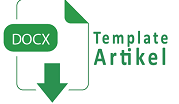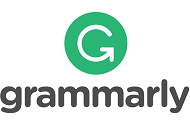- Focus and Scope
- Section Policies
- Peer Review Process
- Open Access Policy
- PULICATION ETHICS
- ARTICLE TEMPALTE
- ARTICLE PROCESSING CHARGES
Focus and Scope
The Information Technology Journal (JTI) is intended as a media for scientific studies on the results of research, thinking and analytical-critical studies regarding research in Systems Engineering, Informatics / Information Technology, Information Management and Information Systems. As part of the spirit of disseminating knowledge from the results of research and thought for service to the wider community and as a reference source for academics in the field of Technology and Information.
The Information Technology Journal (JTI) accepts scientific articles with the scope of research at:
- System Engineering
- Expert system
- Decision Support System
- Data Mining
- Artificial Intelligence System
- Computer network
- Computer Engineering
- Image processing
- Genetic Algorithms
- Designing Information Systems
- Business Intelligence and Knowledge Management
- Database System
- Big Data
- Energy Management
- Enterprise Computing
- Technology Management
Section Policies
Articles
Peer Review Process
Jurnal Teknologi Informasi (JTI) dengan e-ISSN : 2623-1700 diterbitkan oleh Lembaga Penelitian dan Pengabdian Kepada Masyarakat (LPPM).
Artikel JTI dimasukan melalui proses elektronik (OJS), sehingga setiap penulis wajib mendaftarkan diri dan memasukan naskahnya melalui OJS (Registrasi).
Setiap naskah yang masuk akan dilakukan peer review (blind review) oleh 2 (dua) reviewer. Peer review dilakukan secara online oleh reviewer dan hasilnya akan disampaikan kepada penulis melalui email.
Hasil review dapat berupa penerimaan, revisi, dan penolakan naskah. Maksimum waktu review adalah 1 (satu) bulan setelah penerimaan naskah. Proses peninjauan akan mempertimbangkan hal baru, objektivitas, metode, dampak ilmiah, kesimpulan, dan rujukan. Reviewer akan menyarankan penerimaan artikel manuskrip. Editor akan memutuskan apakah manuskrip tersebut memenuhi persyaratan Jurnal Teknologi Informasi. Keputusan editor adalah final.
Open Access Policy
This journal provides immediate open access to its content on the principle that making research freely available to the public supports a greater global exchange of knowledge.
PULICATION ETHICS
JOURNAL OF INFORMATION TECHNOLOGY PUBLICATION ETHICS
A. Journal Identity
Journal of Information Technology is one of the journals managed by the Universitas Respati Indonesia, to enrich the past, present and future understanding of the issues of Information and Technology. Journal topics revolve around several issues such as Informatics Technology and Information System.
This scientific code of ethics statement is a code of ethics statement for all parties involved in the process of publishing scientific journals, namely managers, editors, best partners, and authors. The Code of Ethics for Scientific Publication basically upholds three ethical values in publication, namely (i) Neutrality, which is free from conflicts of interest in the management of publications; (ii) Justice, which is to give authorship rights to those who are entitled as authors; and (iii) Honesty, which is free from duplication, fabrication, falsification, and plagiarism in publications.
B. Publisher Responsibilities
1. Publishers Administrative journals and management are responsible for publishing articles that have gone through the process of editing, reviewing, and laying in accordance with the rules of publishing Scientific Journals
2. Publisher Administrative journals and management are responsible for guaranteeing the academic freedom of writers, editors, and partners in carrying out their respective duties
3. Publishers Administrative journals and management are responsible for maintaining privacy and protecting intellectual property and copyrights, and freedom of testimony
C. Editorial Responsibilities (board editor)
1. Editorial Administration and Management Journal in deciding appropriate texts is published through editorial board meetings (consisting of editors, editors, and reviewers) that refer to the substantive results of articles and applicable legal requirements regarding defamation, copyright infringement, duplication , data fabrication, data falsification and plagiarism
2. In the process of reviewing and receiving the manuscript, the editorial team of the Journal of Administrative and Management Journal based on the principle of equality of treatment in making decisions to publish the text by not distinguishing the race, gender, religion, ethnicity, citizenship or political ideology of the author.
3. Editorial Team The Administration and Management Journal will not disclose any information about the manuscript or manuscript entered except with the author's permission 4. Unpublished manuscripts will not be used by editorial research of the Administration and Management Journal for their own purposes
D. Responsibilities of Mitra-bestari
1. Partner-bestari Administrative Journal and Management assist editors in making editorial decisions on incoming texts / texts
2. Partner-bestari Administrative and Management Journals are responsible for the recommendations of the manuscript they have reviewed
3. The study of the manuscript is carried out objectively and supported by clear arguments
4. Partner-bestari The Administration Journal and Management are responsible for examining the quotations, references, duplications, fabrication of data, falsification of data and plagiarism of the texts that are reviewed
5. In carrying out inspection tasks in points (4) above, partners are best-sellers by the editor team
6. Partner-bestari Administrative and Management Journal must always maintain the confidentiality of information and not use information from the manuscript that it examines for personal gain / interest
E. Author's responsibility
1. The author must present the text of his thoughts or research clearly, honestly, and without duplication, data fabrication, data falsification and plagiarism or auto-plagiarism
2. The author is responsible for the confirmation submitted for the written text
3. The author must show references from the opinions and works of others quoted
4. The author must write the script ethically, honestly and responsibly, in accordance with the rules of writing scientific works in force
5. The author does not object if the text is edited in the process of review and layout without changing the substance or main idea of the writing
Editor Address: Jalan Bambu Apus I No. 3 Cipayung East Jakarta 13890, tel. 021-8457627, http://ejournal.urindo.ac.id/index.php/administrasimanelola p-ISSN: 1693-6876, online-ISSN: 2623-1719
ARTICLE TEMPALTE
GUIDELINE FOR WRITING JOURNAL OF INFORMATION TECHNOLOGY
Journal of Information Technology receives the writing of original scientific papers (articles, reviews/reviews, case study reports, book reviews, or matters relating to information technology and information system. The article has not been published or in the process submitted for publication in another journal or magazine.
PEER REVIEW ARTICLES
Articles that have been submitted to the journal will be conducted technical review of the writing and subctance of the article by a minimum of 2 (two) person reviewers.
ORIGINALITY AND PLAGIARISM
The author of the article should make sure that the manuscript sent is self-made and plagiarism free. All published manuscripts will be checked by using antiplagiarism software.
1. Writing systematics
A. The original: the title (maximum 20 words; 14 PT), the name of the author (no degree), the origin/institution, the email, the abstract (written in Bahasa Indonesia and/or English. Abstracts compiled by word count not exceeding 250 words using Calibri typeface Type 11 PT single SPACEBAR. On the abstract page are listed minimum 3 words and maximum 9 words (keywords).
B. Main sections: Contains Introduction, literature review and the development of hypotheses (if any), methods/research method, results of research and discussion, and conclusions and suggestions.
C. The final part: A thank you, the symbol description (if any), and the bibliography
2. Layout
The manuscript is written on A4 paper with the following margin format:
A. Margin over 2.5 cm
B. Margin below 2.0 cm
C. Left margin 2.5 cm
D. Right margin 2.0 cm
Each script has a maximum of 10 pages (including table, image, and reference list) with a single space spacing, Calibri typeface, size 11 pt.
B. Language, unit, and emblem
The manuscript is written in the raw Bahasa Indonesia, straightforward and clear. The use of units and emblems refers to the rules of national standards and International units (SI).
Equation writing
Equations or formulas are written using the Equestion software and are numbered, for example:
Ω = 2 πr.................................. 1
Writing equations in text is stated with the press. (1).
Images and tables
Drawings and tables printed with black and white color. Write a picture and a table like the example below.
Figure 1. Image caption (middle bottom) and table 1. Table caption (in the middle top). In the text is written Gbr. 1. and table 1.
3. Reference List
The reference list is written in the order of the manuscript's appointment using the Vancouver system (numbers in square brackets). The reference contains initials and author name (anonym), journal name or book name, volume, editor, publisher, City, year, and page.
Examples of reference lists:
Paper in journals
[1] E. Yusron. Journal of Makara Sains 10, (2006) 41.
[2] G. Smith. Thin Solid Films (to be published).
Electronic publications, Internet information
[3] S. Auzary, K.F. Badawi, L. Bimbault. Phys. Rev. Lett. 68 (2008) 2912. Hep-th/9112009.
[4] L. Weiss. Instruction to Authors, Elsevier Publishing, http:/www.elsevier.com/authors.html 1999.
Publication of the Proceeding of confrention
[5] C.H. Perry, F. Lu, F. Namavar, N.M. Kalkhoran. Material Res. Soc. Symp. Proc. 256 (2005) 132.
[6] J.J. Favier, D. Camel. Proceedings of the Eight International Conference on Crystal Growth, York, U.K., 2006, p. 58.
Monographs, edited Books
[7] D. Falix [Ed.]. Handbook of Optical Constants of Solid II, 3rd Ed., Academic Press, New York, 1991, p. 253.
[8] S.M. Sze. The Physics of Semiconductor Device, Wiley, New York, 1981, p. 345.
Thesis, thesis, Dissertation
[9] R. Ramos. Ph.D. Thesis, College van Dekanen, University of Twente, Netherland, 1991.
[10] S. Badu. Bachelor's thesis, Department of Chemistry FMIPA, Universitas Indonesia, 2008.
Patent
H. Yamagushi, A. Hiroe, H. Nishio. Japan Patent No. 5264701, 23 Nov. 1993.
Paper Industry Report
[11] R.D. Nicholson. International Structures in Nickel-based Transitions Joints After Long Term Service, Report RD/M/N1131, Central Electricity Generating Board, Marckwood, 2005.
[12] J. Cleveland. Spring Constant Update, Digital Instrument, Santa Barbara, 1987. [If there is a Website address can be added with Italic letter]
Special Data [if the author of a team or synonym]
[13] Joint Committee on Powder Diffraction Standards, Powder Diffraction File, ASTM, Philadelphia, 1967, Card 4301027.
[14] Anonymous. 19th Annual Book of ASTM Standards Part 17, ASTM Philadelphia, 1969, p. 457.
Unpublished results (referenced if strictly necessary)
[15] D.H. Smith. Physics Departement, Chicago University, Chicago, U.S.A., Private Commun, 1966.
[16] R. Stumpf, X. Gonze. Fritz-Haber Institute Research Report, 2006, Unpublished.
4. How to send the script
Script in Send to address:
Editorial Board of Administration and Management Journal, Indonesian Respati University (URINDO)
Jl. Bambu Apus I No. 3 Cipayung, East Jakarta.
Email: jam@urindo.ac.id; lppm@urindo.ac.id
Sign up and Submit online: http://ejournal.urindo.ac.id/index.php/administrasimanajemen
C. P: 082261111655; 081317797837
The author will receive a notification if the script is received and will be contained in a journal in the form of a letter receipt (acceptance letter). After obtaining the certificate, the author shall make payment of Rp 500,000.00 through BNI account: No. 1020519402.
JOURNAL OF ADMINISTRATION AND MANAGEMENT
eISSN 2623-1719; pISSN 1693-6876
Published 2 (two) times each year
(June and December)
ARTICLE TITLE (no more than 20 words, using Capital Each Word, 14 pt, Bold, center), written in Bahasa Indonesia
Corresponding author 1, companion author 1, and companion author 2 (11pt)
1 author's position on first supporting institution (11PT)
2 author's position on second supporting institution, if available (11pt)
Main author's email address (11pt)
Abstract (maximum 250 words)
Keywords:................................................................................. (3-9 words; Calibri 11 PT)
Abstract
Keywords: 3-9 keywords in English (11 pt, italics)
INTRODUCTION (11 PT, BOLD)
Paper is written with Calibri, size 11 and in A4 document Format (210mm x 297mm) with a margin over 2.5 cm, bottom: 2cm, left 2.5 cm and right: 2 cm, right align – left. The contents of the document, including tables, graphs, images should not be more than 10 pages. The title should be short, informative and no more than 20 words. The article is created into two columns.
The introduction contains the background of why the research was done, the formulation of problems, review of the literature and description – information related to the writing. As for the part of the introduction are the background, formulation of problems, research objectives and benefits of research
Method
Contains research design, how-to-how research includes population and samples, instruments and how to collect data, data analysis techniques. Results present data characteristics and findings – research findings.
RESULTS AND DISCUSSION
The results contained a brief statement about the research results. While the discussion contains discussions that relate and compare the results of the research with the previous theory and research results.
EXCERPT: Writing the quote by mentioning the source is by writing the author's last name accompanied by the published year of the book. Quotations can be done in a direct way, summarizes.
TABLE: The title of the table is written with size 11, print bold. Like the example below. Numbering table names by using Arabic numbers. Between table headings and tables are not spaced. Table contents are written with Calibri font 11 and with spacing 1. While the image title is placed below the image with format like table headings.
Table 2. Class interval to assess Quality
Group |
| Quality assessment |
50 – 90 91 – 131 132 – 172 173 – 213 214 – 254 |
| Very low Low Adequate Good Very Good |
Figure 1. The belief hypothesis curve (X1) on customer loyalty (Y)
CONCLUSIONS AND RECOMMENDATIONS
The concluding section consists of Conclusions and Suggestions based on the results of the study.
CLOSING (IF ANY)
Contains acknowledgment or gratitude to the parties who play a role and are involved in the implementation of research / article writing (donor / sponsor), both material and other facilities.
REFERENCES (11 PT, BOLD)
All articles referred to are written in the Bibliography with the provisions (Vancouver System) as follows: Space spacing is used 1 space, the second row of each article begins jutting in with 6 beats. The distance between articles is 1 space. Article Writing Order by number. The author's name is written without a title, starting from the last name (family name), written in full, followed by his first name, abbreviated and does not need to be sorted alphabetically. No need to sort the year of publication of writing. Use of bibliography in the last 10 years for references from books and the last 5 years for journals.
(only written in accordance with the citations listed in the publication text only)
It is recommended to use the Application Reference Management Tool like Mendeley and others.
ARTICLE PROCESSING CHARGES
This journal charges the following author fees.
Article Submission: 0.00 (IDR)
Authors are required to pay Article Submission Fees as part of the submission process to contribute to review fees.
Fast Track Reviews: 0.00 (IDR)
With payment of these fees, reviews, editorial decisions and author's notices in this manuscript are guaranteed to take place within 4 weeks.
Publication Article: Rp 400.000 (IDR)
If the Writer wants a printed version, an additional fee of Rp 100.000 / Expansion (including post) is charged













